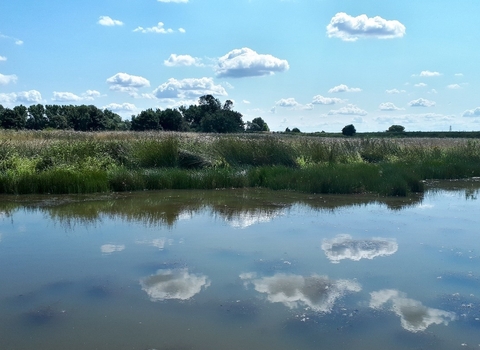Greater Lincolnshire is in the driest region of the UK, sharing the same levels of rainfall as Cape Town in South Africa. Public water shortfalls are predicted for 2030 without intervention. With the changing climate the area will also be subject to extreme environmental hazards, including flood and drought. Much of the South Lincolnshire Fens is within the highest category for flood risk, Zone 3, with the catchments draining large areas of England that enter one of the most highly protected, and biologically rich, sites in the UK - The Wash. The area is within a Surface Water Nitrate Vulnerable Zone and produces 25% of all of the UK’s vegetables, critical to national food security. 99% of natural fenland habitats have been lost.
The relationship between humans and nature is complicated everywhere, and South Lincolnshire illustrates this especially well. It is therefore here that Lincolnshire Wildlife Trust works with a multitude of partners to try to manage water at a landscape scale, for people and wildlife. It is here that the Trust created Willow Tree Fen over 10 years ago and saw, in 2020, common crane return to breed successfully. It is in South Lincolnshire that the Trust has propagated rare plants and brought them back from the edge of extinction. And it is here that we are creating a Nature Recovery Network along the River Glen via connecting up a series of sites, which hopefully will see Bourne North Fen added in the coming years. We also piloted our “Naturehoods” approach at Baston, where we co-designed with the local community across the village, creating nature highways. If you are going to spend a pound on nature’s recovery, it is well spent in the Fens as a whole, where 25% of all the UK’s scare and rare species reside.

South Lincolnshire Fens by Rachel Shaw
